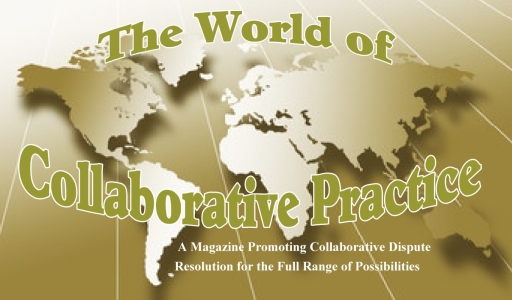
Tags
Related Posts
Share This
Riding Two Horses…… ?
I ‘discovered’ Collaborative Practice in 1999. Of course it was only ‘new’ to me. Stu Webb had started the ball rolling in the late 1980s.
Most of what appealed to me about it was that it offered a way to work with people that did NOT involve the courts. Instead it focused solely on helping them to reach decisions they could both live with. Whether or not one of them was ‘right’ was irrelevant. What some third party – a judge or a legislature – thought did not have to determine the outcome for them.
To me this was huge. It was a large part of what Stu and others were calling the Paradigm Shift that a professional would undergo in doing Collaborative Practice. This was a view of the work that was quite different from that of litigation practice. Indeed it was often argued that the two were incompatible. That doing both was at best really hard, potentially schizophrenic, and maybe even impossible.
By 2004 Nancy Cameron had released her book Collaborative Practice: Deepening the Dialogue. And she offered an image that caught on throughout the CP community in support of that “impossibility” notion –
“I have often thought of this dual role of conflict resolver and courtroom advocate as akin to being asked to ride two horses. … At some point to remain riding it will be necessary to commit to one horse or the other. The difference between the skills I bring as a collaborative practitioner and those I used settling within a litigation template is the difference between riding one horse rather than two.”
This was a great image for those of us who had actually walked away from doing litigation. It didn’t seem to do much, though, to encourage anyone to take that step.
As the years have passed the percentage of the CP-trained attorneys who are still “doing both” has steadily if not exponentially grown. I think maybe there have been two major reasons for that. One has been the absence of any real screening of those who sign up for the training. It hasn’t mattered who the attorney is or what his/her interest or intention is with regard to Collaborative Practice. All are welcome; many are actively buttonholed in order to make the training financially viable. It would be ‘nice’ if we could build CP by inviting the professionals who it is believed would be suited for the work. Nice, but maybe impracticable. Besides, the dam has pretty well burst in that regard.
The other reason that I see is that there has been too little done to respond to the genuine and important question “how can I make a living doing only Collaborative?” In the last couple of years that has begun to change. Woody Mosten and others have begun to offer workshop experiences in which real, practical options are offered for increasing ones percentage of non-litigation work and even stop taking on litigation work entirely.
So lately I have begun to wonder if maybe we could refresh of Nancy’s wonderful image. Maybe, because it IS indeed possible to ride two horses, it’s an image that supported those who didn’t want to. But maybe it didn’t quite capture the essential difference between litigation and Collaborative Practice and the practical, personal difficulties of doing both. Of being both kinds of person.
So with much appreciation of Nancy and of the “two horses” image, I humbly offer the image that trying to do litigation AND Collaborative Practice is kind of like trying to ride a horse and a dolphin at the same time.
I think the intention is the same as Nancy’s – as I see it. Which is simply to point out that even something you ‘can’ do isn’t necessarily something you want to do. That doing Collaborative work, can make it very difficult – maybe even dispiriting – to jump back into the saddle of litigation.
I’ve chosen my mount. My hope is that a growing number will choose theirs. Which one it is, I believe, is less important than that you ride with purpose and commitment to those in whose service you mount up.










Share your thoughts here and in your network.